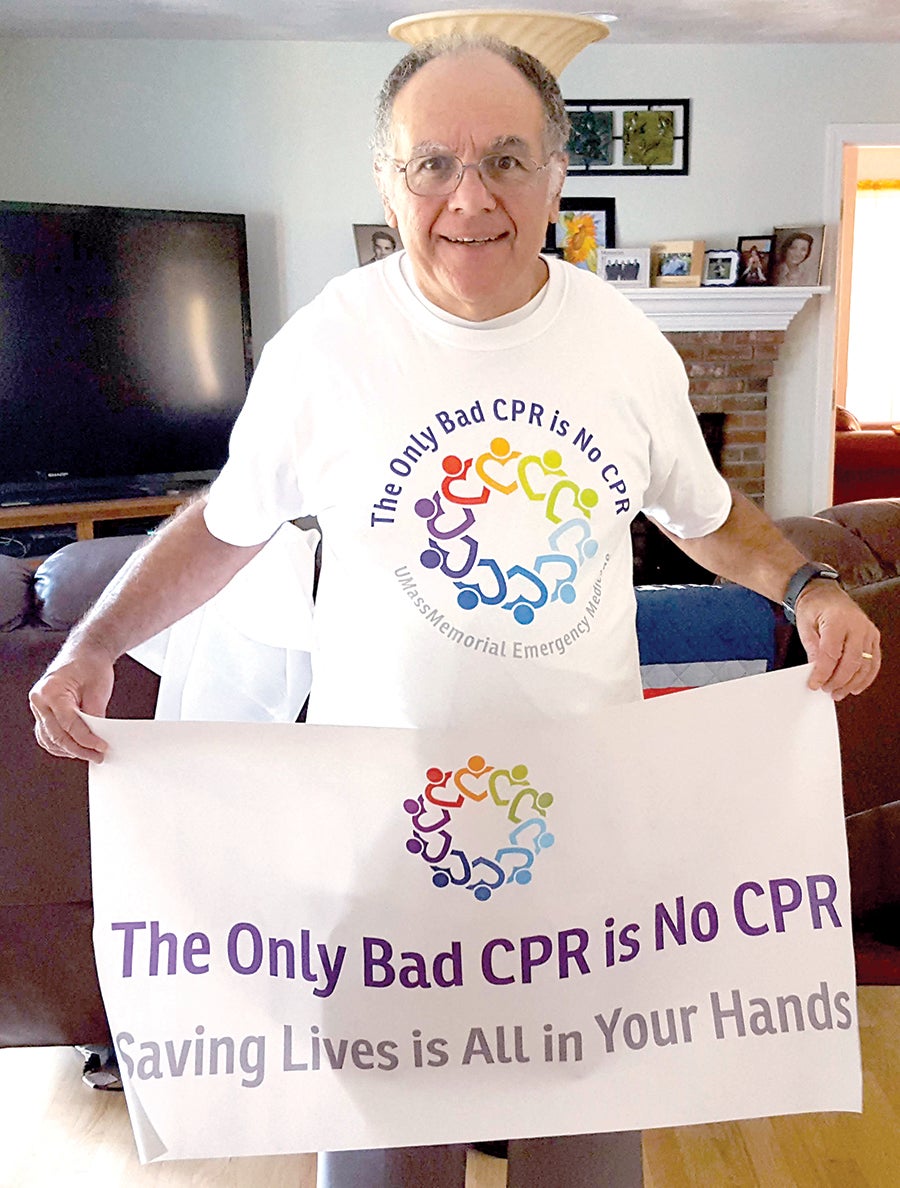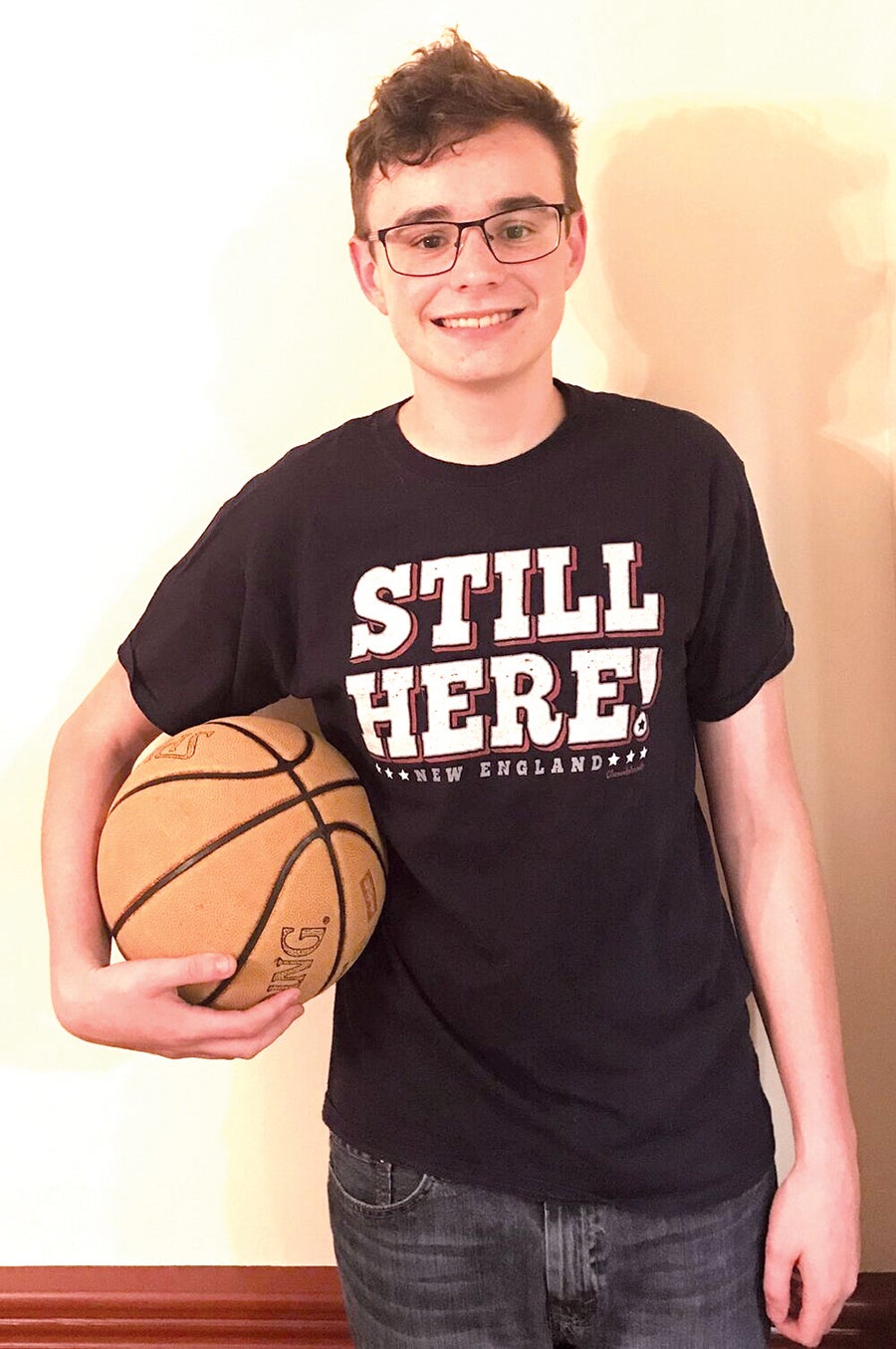Four minutes can go by in an instant, but for someone going into sudden cardiac arrest, this is all the time they have in order to have the highest probability of surviving. Every minute a cardiac arrest patient goes without receiving CPR their likelihood of survival drops by 10%.

At a dire moment, when every second counts, one might assume calling 911 would immediately get you in touch with someone who could articulate how to administer CPR, which is short for cardiopulmonary resuscitation. However, in Massachusetts this is not always the case.
“I asked for the data on what our survival rate was and when they handed me the data, I almost fell out of my chair, it was so bad. It was the 911 telecommunicators, who told me what the problem was,” said Dr. Joseph Sabato, the 911 medical director at Worcester’s UMass Memorial Medical Center’s emergency department, who worked at hospital systems in Florida and New Hampshire before joining UMass.
According to Sabato’s testimony in front of the Massachusetts Legislature’s Joint Committee on Public Health, UMass received 114 out-of-hospital cardiac arrests with only three survivors being discharged from the hospital, a 3% survival rate. When Sabato talked to his counterparts at other Massachusetts hospitals, their data also reflected dismal survival rates, he said. The 3% survival rate shows a deep disconnect when compared to the national average of 8% to 10%.
The low survival rate of cardiac arrest is further complicated by the fact 911 phone calls on cell phones are sent to the Massachusetts State Police dispatch before they are routed to an ambulance service to provide actual medical advice. Not only are valuable minutes lost in between the transfer of calls, but these dispatchers may not have the medical training to provide over the phone instructions to conduct hands-only bystander CPR, which ultimately gives cardiac arrest patients a fighting chance at life until trained first responders arrive.
The Massachusetts legislature is considering a new bill backed by the American Heart Association and sponsored by State Sen. Michael Moore (D-Millbury) of Second Worcester to mandate every emergency telecommunicator be trained to provide hands-on bystander CPR instruction during an emergency cardiac arrest event.
In addition to telecommunicator CPR directions, the legislation will provide public access to defibrillators in a timely manner and make Sudden Cardiac Arrest a reportable disease in Massachusetts.

Medical hub experiences below average survival rates
Since he learned of the poor survival rates in Massachsuetts, Sabato has been committed to saving an estimated 500 lives per year by providing dispatchers with the tools and training that they need in order to quickly relay bystander CPR.
Sabato said Seattle’s sudden cardiac survival rates are 40%, due to a city wide campaign promoting bystander CPR and heavily encouraging the public to learn the locations of defibrillators and how to use them. Additionally, signage and greater numbers of defibrillators throughout businesses and stores makes them much more accessible during emergency situations. Sabato hopes to emulate that model and type of public awareness in Central Massachusetts and throughout the state.
“I actually pointed out to [Worcester] Mayor [Joseph] Petty that the city with the heart as its symbol could become the best place for other communities to look to, for how to deal with out-of-hospital, cardiac disease,” Sabato said.
Bystander CPR and CPR certification are two different entities. While the formal certification of CPR training is always preferred, Sabato advocates everyone at least learn how to administer hands-only bystander CPR, which can be taught in 15 minutes and focuses on sustaining someone in cardiac arrest long enough until a person who is CPR certified arrives. The Good Samaritan Law in Massachusetts legally protects the general public from being sued if they administer first aid, CPR, and defibrillators during emergency situations.

Sudden cardiac arrest legislation
For the past three years, Sabato has been working with Allyson Perron Drag, the government relations director and regional lead of the American Heart Association, to pass legislation while spreading public awareness about bystander CPR and publicly accessible defibrillators.
Massachusetts passed an Act Relative to the Emergency Medical Service System in 2000 with its regulations established in 2010, which requires that emergency dispatchers give CPR instructions, Perron Drag said. However, the new bill focuses on improving the training of dispatchers so they can provide accurate and efficient directions without hesitation.
“For us, the most important part is how fast can you get hands on the chest, right? We want to make sure EMS is called and dispatched, but they can take 10 to 15 minutes to get to somebody, and that would be too late for somebody that has suffered sudden cardiac arrest,” she said. “So part of the bill would look to ensure that kind of quality around what we call T-CPR” or telecommunicator CPR.
The new bill had momentum in the 2021 legislative session, when the COVID-19 pandemic took priority, leaving bills such as this on the backburner, said Perron Drag. However, the bill is being reviewed by the Joint Committee on Public Health, where it can then make its way to the Healthcare Finance Committee before being sent to the House or Senate.
“There hasn’t seemed to be people that have come out against it. There was some concerns on some language from the national organization association for telecommunicators. But we worked with them and suggested some amendments to the bill, and we were fine with them,” she said.
A new lease on life

The reality of relying on a 911 operator is something the Anderson family of Beverly is trying to relay to the public after 17-year-old son, Daniel, went into cardiac arrest on June 26, 2019.
Daniel was playing basketball at a friend’s house in Peabody when he suddenly collapsed and went into cardiac arrest. The friend’s mother immediately called 911, where a dispatcher for the town’s ambulance service provided bystander CPR instructions over the phone.
The friend’s mother followed the dispatcher’s directions and kept Daniel’s heart going in those critical moments before the Peabody Fire Department arrived on scene with an automatic external defibrillator.
Fortunately, Daniel survived and later had open heart surgery to correct a previously undetected congenital heart defect. Since then, Daniel Anderson has gone on to graduate high school and begin his career journey as a plumber.
After the traumatic event, the Andersons pledged their full support to the legislation and even testified in front of the Joint Committee of Public Health.
“Most people know to call 911 right away. That’s, I think, ingrained in our culture. But the idea that the dispatcher may not understand how to do hands-only CPR instruction over the phone is a bit shocking to me. So if we can encourage this [legislation] along so that everybody receives the kind of care that Daniel received, it gives us all a little peace of mind,” said Daniel’s father, Kurt Anderson.
Daniel’s parents are forever grateful for the CPR intervention which saved his life, but they still face the PTSD and worries coming with almost losing a loved one. The Anderson family was so overwhelmed by this experience that they founded Ready to React, a CPR education organization seeking to teach the American Heart Association’s hands-only bystander CPR.
It was Daniel’s first time visiting his friend’s house that day when he went into cardiac arrest and according to Kurt, it was a series of miraculous events from the dispatcher instructing bystander CPR, to the friend’s mother quickly reacting, and even an EMT who happened to be covering a shift and was already on the fire truck with a defibrillator, which all increased Daniel’s chances of survival.
“And those are just a few of [circumstances]. There’s at least a dozen more that have contributed to Daniel’s success that make me still shake when I think of it, too. You know, I don’t know what you believe in. But there’s a reason why Daniel survived. And we kind of have chosen knowledge of CPR and response and people having the education they need to respond to an emergency to be our cause,” Kurt said.
More information can be found at the Anderson family’s organization https://www.readytoreact.org/ or the American Heart Association at https://www.heart.org.
